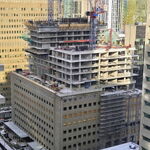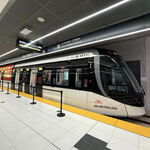sixrings
Senior Member
What is wrong with low floor lrts. The c train in Calgary has needless stairs and long ramps.I hope we don't build any additional low-floor lines. I'm kind of hoping the REM / HART / Ontario Line will be the start of the trend of North American cities building automated light metro. We do seem to follow trends here, for a long time it was LRT everywhere for every purpose!




